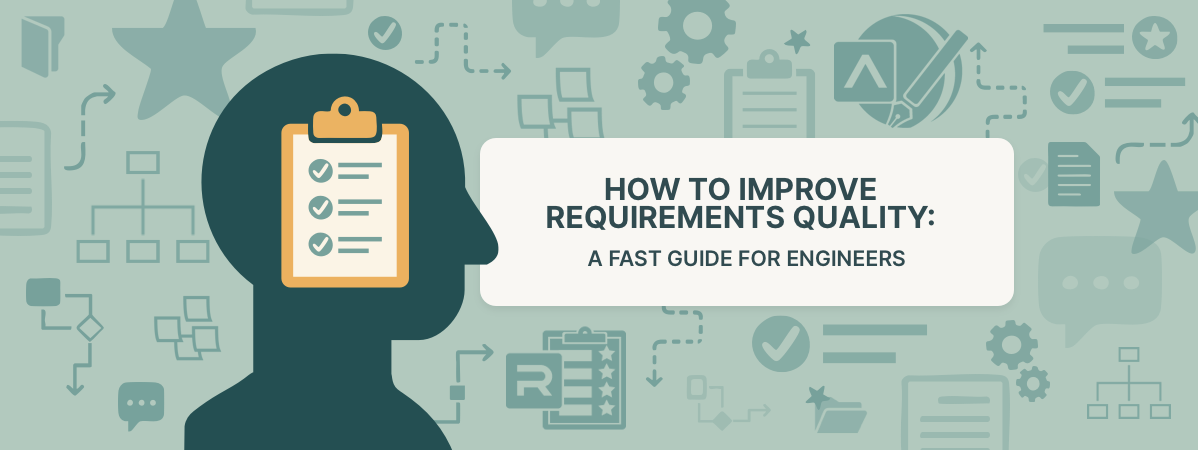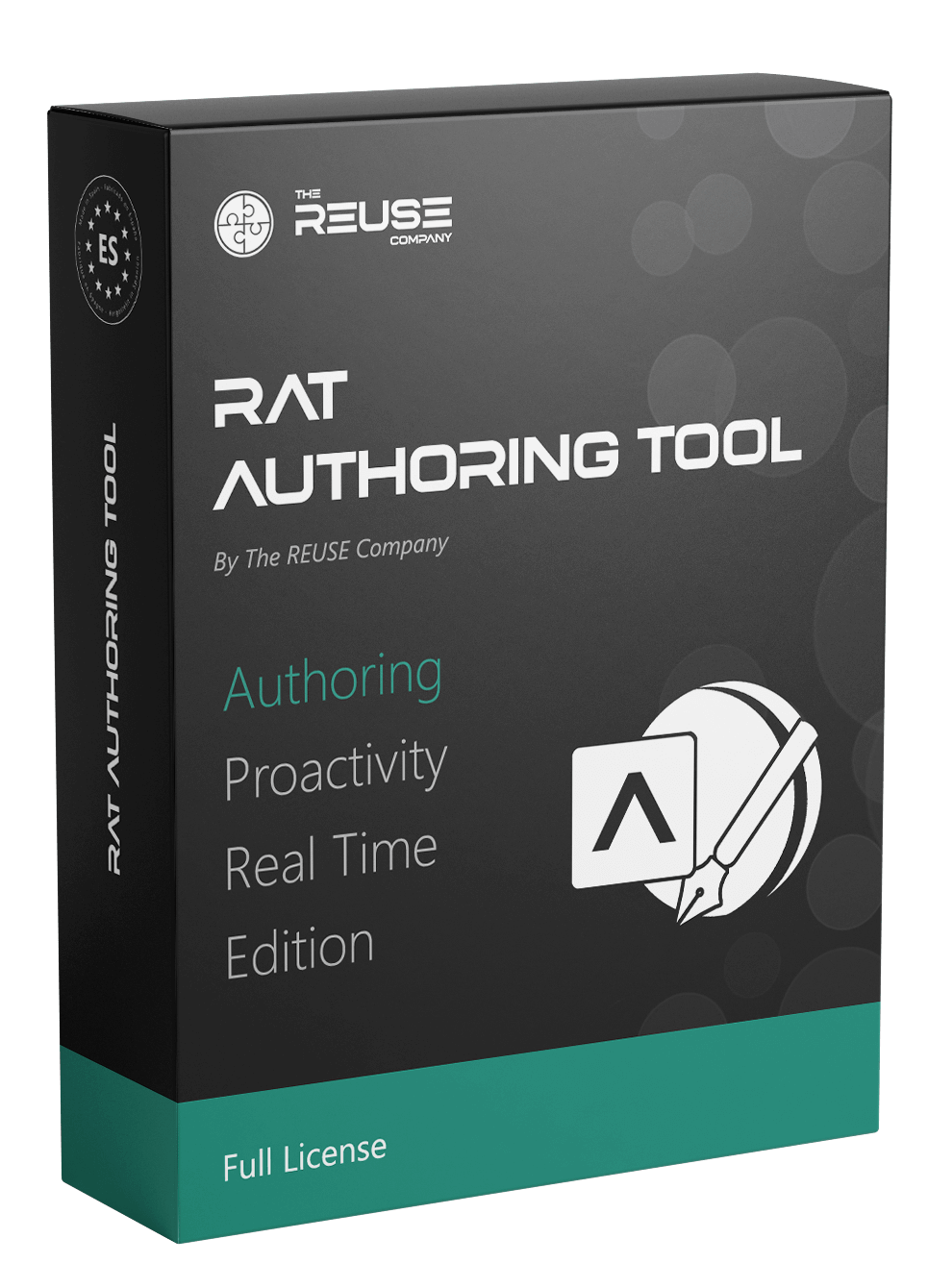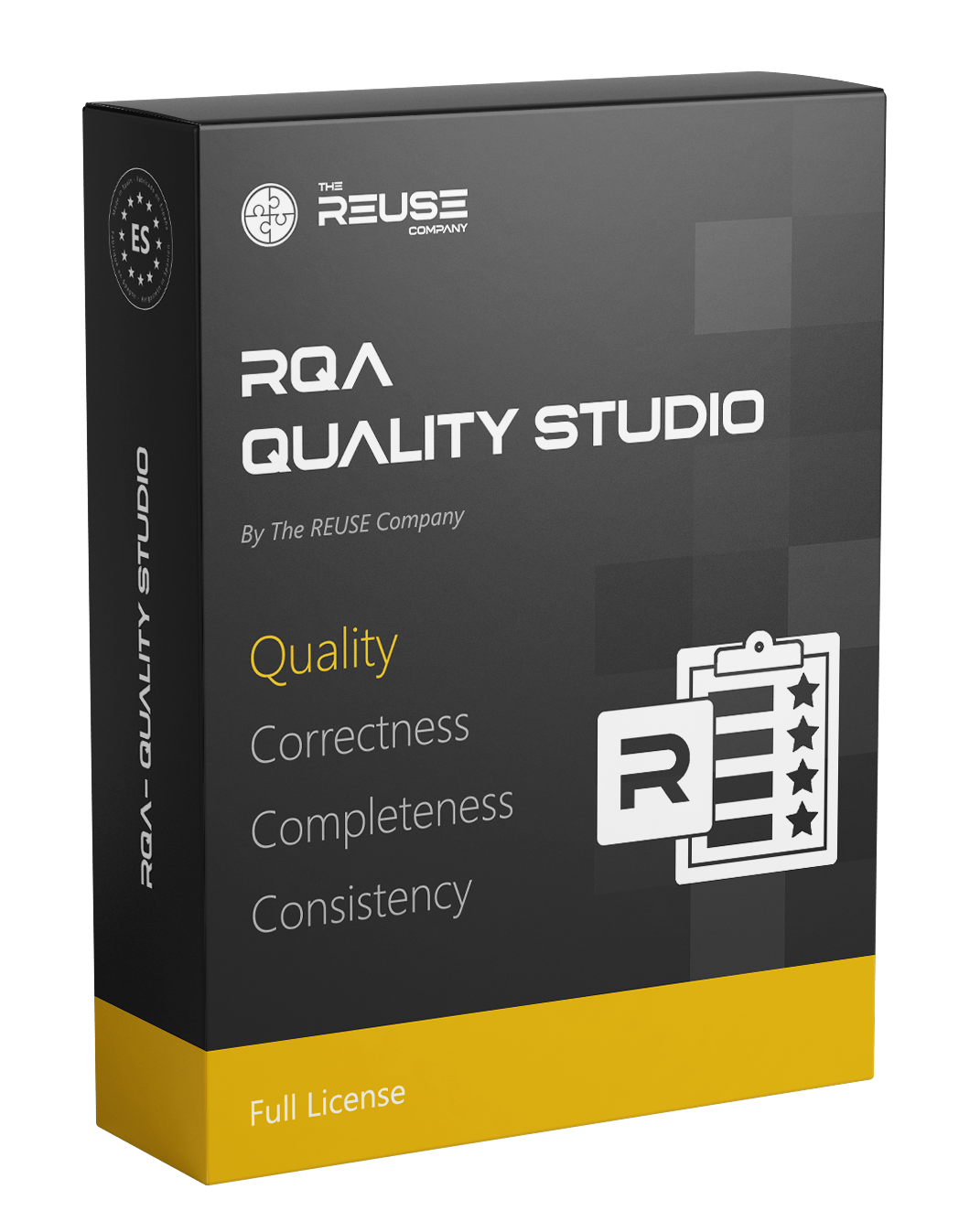
Strong engineering projects start with strong requirements. Just as a building depends on concrete and steel, a project depends on clear, consistent, and correct requirements. When these are poorly written, confusion grows, costs rise, and systems risk failure.
This fast guide for engineers walks you through what requirements quality means, why it matters, and the practical steps and tools you can use to improve it right away.
What happens when requirements quality is poor?
When requirements are ambiguous or incomplete, they create misinterpretations, rework, and costly delays.
As a project advances from Concept → Design → Development & Test → Production → Operation → Maintenance → Retirement —the cost of fixing each issue increases dramatically.
Real-world examples highlight the impact of unclear specifications:
- NASA’s Mars Climate Orbiter failed due to a metric–imperial conversion mistake, costing $125 million.
- French railway operator spent €50 million refitting trains that didn’t fit older stations.
- Aerospace engine programs lost billions because of imprecise or contradictory requirements.
Each case proves that poor requirements discovered late can turn small oversights into enormous financial losses.
How can engineers make requirements more effective?
High-quality requirements are clear, testable, and traceable. A simple starting point is the SMART model:
- Specific – Avoid vague or generic wording.
- Measurable – Make verification possible with quantifiable data.
- Attainable – Set realistic objectives based on available resources.
- Relevant – Focus on what truly matters to system performance.
- Time-based – Include deadlines or timing when appropriate.
Two essentials complement SMART:
- Verification: Prove every requirement can be tested or demonstrated.
- Traceability: Link each element from need → requirement → design → implementation → test.
Together, they ensure every statement has both purpose and evidence.
How do you assess requirements quality?
To evaluate how solid your specification really is, apply the Three C’s framework:
- Correctness – Does each requirement align with stakeholder needs and standards?
- Completeness – Does the entire set cover every necessary aspect?
- Consistency – Are there contradictions or overlaps?
This trio forms the foundation of any effective requirements-quality check.
What are the best tips for writing clear requirements?
Follow these 12 tips to keep your requirements precise and easy to understand:
- Be short and precise. Cut noise, keep essential details.
- Use “shall.” Avoid weak verbs like should or may.
- One idea per statement. Keep requirements atomic.
- Prefer active voice. Clarify who performs each action.
- Avoid negatives. Describe what the system does, not what it doesn’t do.
- Stay consistent with terminology. Eliminate ambiguous synonyms.
- Don’t embed solutions. State the “what,” not the “how.”
- Use units and tolerances. Prevent measurement confusion.
- Keep models aligned. Ensure requirements mirror design structures.
- Match detail to phase. Add precision as development progresses.
- Avoid combined actions (“and/or”). Split complex sentences.
- Follow internal writing standards. Maintain uniform style.
Bonus!
13. Apply common sense. Context and clarity always come first.
Additional Bonus!
- Do you want to use LLMs to provide the first shot? No problem, but then assure the previous tips in a deterministic way
Is there a pattern for writing better requirements?
Yes. A consistent pattern reduces ambiguity and supports automation:
When [condition], the [subject] shall [action] [object] **[constraint]*.
Examples:
- When the temperature sensor detects an obstacle, the brake subsystem shall stop the acceleration engine in less than 20 milliseconds.
- When the gas pedal is pressed, the vehicle shall reach 100 km/h in less than 5 seconds.
Patterns make writing faster and verification easier.
Which tools can help engineers evaluate requirements quality?
Manual reviews help, but automation ensures consistency across large projects.
Two solutions make this possible:
RAT – AUTHORING Tool
- Works directly with Microsoft Excel or other sources.
- Detects spelling issues, missing units, and vague terms as you write.
- Suggests instant corrections to improve clarity and compliance.
RQA – QUALITY Studio
- Analyzes correctness, consistency, and completeness using configurable metrics.
- Flags unit mismatches, ambiguous verbs, and missing tolerances.
- Lets teams set “quality belts” to define strictness levels.
- Synchronizes with RAT for real-time author–reviewer collaboration.
Together, these tools allow engineers to identify quality issues early and avoid expensive late-stage rework.
How can you start improving your requirements today?
Follow these quick, actionable steps:
- Apply the SMART + Three C’s framework to every new specification.
- Use a shared requirement pattern to standardize structure.
- Adopt the 12 + 1 tips as your team’s internal checklist.
- Run a RAT + RQA pilot to measure baseline quality and progress.
- Explore more of our related guides from our blog:
Why focus on requirements quality now?
Because better requirements lead to better systems. Each improvement, whether in wording, structure, or automation, saves time, prevents errors, and builds confidence in your engineering process. To learn how RAT – AUTHORING Tool and RQA – QUALITY Studio can strengthen your workflow, you can check out our product websites, flyers, and even contact us to book a demo!


